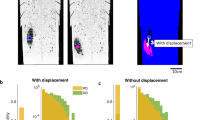Abstract
After presenting some introductory material, in the first section of this book, we provided some theoretical considerations that relate individual activity patterns of small mammals to physiological constraints (Chap. 3), and to ecological aspects of temporal behaviour (Chap. 4). The theoretical section also provided a general background to biological rhythms and biological clocks (Chap. 2). The other main section of the book surveyed our current knowledge of activity patterns in various small mammal groups as based on empirical findings. In this concluding chapter we, as the editors, want to provide a synthesis of the information presented in the previous 14 chapters. In doing so we will try to concentrate on the general features in — and behind — the various approaches to activity patterns by a comparison among small mammal species. We would like this synthesis to serve as a baseline to clarify where we are and to point towards future developments — for better understanding, and to address new challenges.
Access this chapter
Tax calculation will be finalised at checkout
Purchases are for personal use only
Preview
Unable to display preview. Download preview PDF.
Similar content being viewed by others
References
Bednekoff PA (1996) Risk-sensitive foraging, fitness, and life histories: where does reproduction fit into the big picture? Am Zool 36:471–483
Caraco T (1980) On foraging time allocation in a stochastic environment. Ecology 61:119–128
Charnov EL (1976) Optimal foraging: the marginal value theorem. Theor Pop Biol 9:129–136
Engen S, Stenseth NC (1984) A general version of optimal foraging theory: the effect of simultaneous encounters. Theor Pop Biol 26:192–204
Engen S, Stenseth NC (1989) Age-specific optimal diets and optimal foraging tactics: a life historic approach. Theor Pop Biol 36:281–295
Enright JT (1970) Ecological aspects of endogenous rhythmicity. Annu Rev Ecol Syst 1:221–238
Lima SL, Dill LM (1990) Behavioral decisions made under the risk of predation: a review and prospectus. Can J Zool 68:619–640
Lima SL, Valone TJ, Caraco T (1985) Foraging-efficiency — predation-risk trade-off in the grey squirrel. Anim Behav 33:155–165
McNamara JM (1996) Risk-prone behaviour under rules which have evolved in a changing environment. Am Zool 36:484–495
Real L (1980) On uncertainty and the law of diminishing returns in evolution and behavior. In: Staddon JER (ed) Limits to action: the allocation of individual behavior. Academic Press, New York, pp 37–64
Schoener TW (1974) Resource partitioning in ecological communities. Science 185:27–39
Smallwood PD (1996) An introduction to risk sensitivity: the use of Jensen’s inequality to clarify evolutionary arguments of adaptation and constraint. Am Zool 36:392–401
Stenseth NC, Ims RA (1993) Food selection, individual growth and reproduction — an introduction. In: Stenseth NC, Ims RA (eds) The biology of lemmings. Academic Press, London, 263–280
Stephens DW, Krebs JR (1986) Foraging theory. Princeton University Press, Princeton
Editor information
Editors and Affiliations
Rights and permissions
Copyright information
© 2000 Springer-Verlag Berlin Heidelberg
About this chapter
Cite this chapter
Halle, S., Stenseth, N.C. (2000). Chronoecology: New Light Through Old Windows — A Conclusion. In: Halle, S., Stenseth, N.C. (eds) Activity Patterns in Small Mammals. Ecological Studies, vol 141. Springer, Berlin, Heidelberg. https://doi.org/10.1007/978-3-642-18264-8_17
Download citation
DOI: https://doi.org/10.1007/978-3-642-18264-8_17
Publisher Name: Springer, Berlin, Heidelberg
Print ISBN: 978-3-642-62128-4
Online ISBN: 978-3-642-18264-8
eBook Packages: Springer Book Archive




